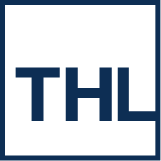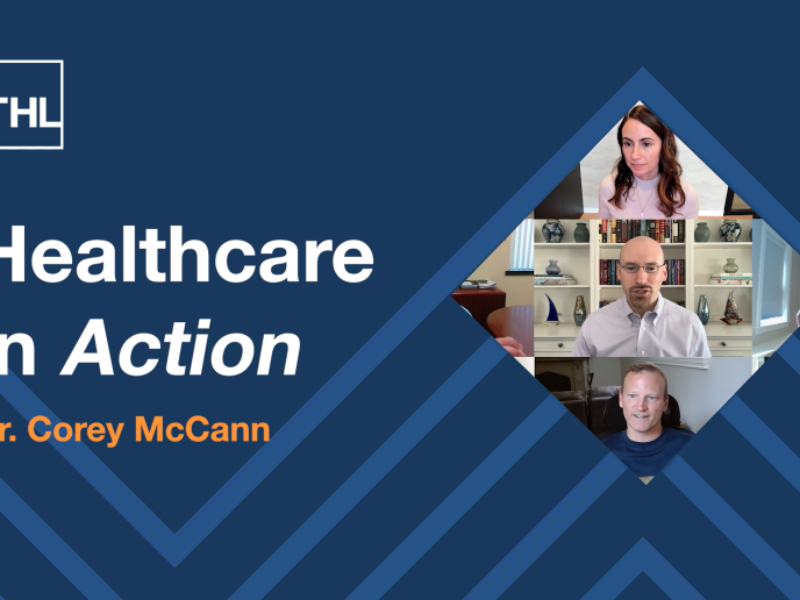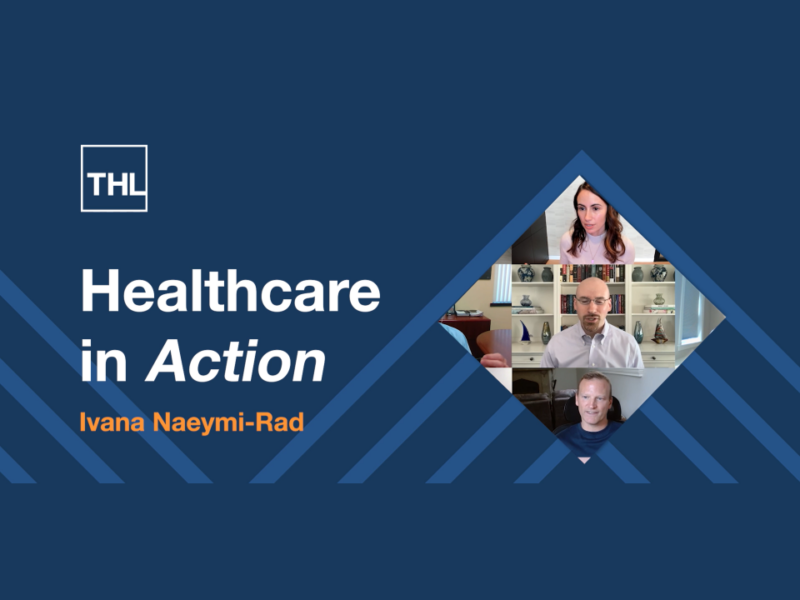Insight & Analysis | Healthcare (HC)
2024 Insights from ViVE and HIMSS

5 Key Takeaways from Q1 HCIT Conferences
Key Takeaways:
- THL’s Healthcare team joined the ViVE and HIMSS industry conferences in Q1 2024.
- The 2024 outlook on performance and M&A activity remains positive as hospitals report improvements in operational productivity and profitability.
- Other key themes emerged at the shows — including increased provider technology adoption, interoperability, pharma’s dependence on care providers for clinical research efficiency, aging in place, and cybersecurity — underscoring the need for strategic partnerships and innovative solutions to address evolving industry challenges and capitalize on emerging opportunities.
In Q1 2024, THL’s healthcare team attended two industry shows — ViVE’s Digital Health Event and the HIMSS Global Health Conference. The team met with dozens of companies, investment bankers, and other sponsors. Our consensus coming out of these gatherings is that the outlook on the sector remains positive for 2024.
For starters, hospital operating performance improved steadily throughout 2023. According to data from Kaufman Hall, margins improved to 2.3% in December, up 15% compared to 2022, and outpatient revenue grew by more than 40% compared to 2020.1 This positive trajectory has fostered a steadily improving commercial environment for companies that cater to the healthcare system and provider markets.
“Improved financial market conditions and better operational performance within the provider market are leading to positive outcomes for HCIT businesses and their customers,” said Josh Nelson, Managing Director, THL, and head of the firm’s Healthcare vertical. “We believe that this trend is laying the groundwork for a more robust M&A environment in 2024.”
In addition to a more optimistic outlook on 2024 performance, five key themes emerged from ViVE and HIMSS: increased provider technology adoption, interoperability, pharma’s dependence on care providers for clinical research efficiency, aging in place, and cybersecurity.
“As we think about these themes, we also have to consider AI, specifically in the context of its use cases in healthcare,” said Shahab Vagefi, Managing Director, THL. “We think it’s going to meaningfully impact administrative workflows long before it gains widespread acceptance in clinical use cases.”
Theme 1. Provider pain points are driving the adoption of technology
Providers continue to face staffing pressures and other operational constraints, driving hospitals to accelerate their adoption of technology solutions. A recent survey conducted by Bain and KLAS shows that nearly 75% of healthcare provider executives expect to increase spending on software and technology over the next 12 months. Hospital executives are putting a premium on solutions with tangible, hard-dollar ROI, particularly with demonstrable top-line impact, such as revenue cycle management (RCM) and clinical workflow optimization. The survey reveals that 39% of health systems and hospitals and 45% of academic medical centers list RCM as their top IT priority and 52% of freestanding hospitals cite clinical workflow optimization as their highest priority area of IT investment.2
AI plays a key role here as well, especially in automating RCM practices like coding and billing and in identifying patterns in claims data to prevent denials and optimize revenue capture. According to a study by Stoltenberg Consulting, 32% of hospital and health system CIOs ranked AI and ML as their top HCIT focus for the year, up from only 6% in 2022.3 We expect this trend to continue over the next several years as generative AI proves its value in transforming healthcare.
“Hospitals and health systems operate with large fixed asset bases and operating costs,” said Vagefi. “Leveraging technology to optimize those resources has become a strategic imperative for providers across the healthcare ecosystem.”
Theme 2: The need for more interoperability in healthcare
With accelerating adoption of technology solutions, the need for interoperability in healthcare has become more pressing than ever. Digitization has ushered in a new era of innovation and efficiency, introducing new technologies and generating vast amounts of data. The healthcare sector generates approximately 30% of the world’s data volume, and healthcare data is growing faster than other subsectors, with an expected annualized growth rate of more than 30% in the coming years.4
Even as the amount of healthcare data has grown exponentially, the sector remains marked by a heterogeneous technology environment, with the average health system using 18 different EHRs across affiliated providers in addition to a wide range of specialized solutions addressing clinical and operational functions outside the EHR.5
“Creating a comprehensive view of a patient or population of patients requires organizations to gather data from specialty providers, hospitals, clinics, labs, pharmacies, and other healthcare entities, all of which may be operating on different IT infrastructure,” said Jon Lange, Director, THL. “There are significant challenges associated with ingesting, integrating, and analyzing this data because it lives across a disparate set of sources.”
In recent years, studies have found that 48% of hospitals report one-sided sharing relationships with other providers, where they share patient data but do not in turn get patient data back, perhaps in large part because 57% report difficulty matching the correct patient between systems.6 Even with interoperability standards from the 21st Century Cures Act, only 36% of providers have the necessary comprehensive data quality programs in place to meet the Act’s requirements.7
AI has the potential to automate and streamline data exchange between multiple systems by interpreting, standardizing, and integrating diverse data formats and sources, thereby enhancing interoperability, and facilitating seamless communication and collaboration across the healthcare ecosystem.
“It’s clear we’re still in the early stages of achieving true interoperability in healthcare,” said Vagefi. “Ultimately, we view interoperability as a foundational layer to enable improved care quality and there is still significant opportunity for EHR and technology vendors and provider organizations to partner effectively and truly impact patient care.”
Theme 3: There is an increasingly symbiotic relationship between pharma and care providers, fueled by technology and the ability to access and mine data.
While the growth in healthcare data has created challenges, it has also generated significant opportunities for providers and pharmaceutical companies to identify and deliver therapeutics to the right patients at the right time. As drugs become more specific and targeted, pharmaceutical companies have a more challenging time finding patients who might be eligible for clinical trial recruitment and therapies in market. Care providers have access to patient data that can help pharmaceutical companies identify which patients or populations to target for trials and therapies.
Organizations are increasingly embracing technology and leveraging data to conduct virtual and decentralized clinical trials, which enable greater diversity of participants and expand access to medicine. In the US, roughly three in four trials will use remote patient monitoring this year, and the virtual trial market is expected to grow more than 10% annually in the coming years.8 There is also considerable opportunity for artificial intelligence (AI) to transform clinical research.
“It has become clear that you can’t be a pharma-oriented vendor without a strategy for accessing valuable clinical data and providers are increasingly cognizant of the strategic importance of their data to the pharmaceutical industry,” said Nelson.
Theme 4: Technology is enabling patients to age in place for longer
Another key trend continuing to emerge, particularly post Covid, has been the growth in the number of people who wish to maintain independence and continue living in their homes as they age. In fact, 93% of adults want to age in place, and adults 65+ are increasingly receiving care at home versus at nursing homes or other healthcare facilities.9 Today, 80% of adults 65+ currently live in their homes and make up one third of all homeowner households.10 According to the U.S. Census Bureau, the number of adults age 65+ has grown from 35 million in 2000 to approximately 58 million11 in 2022 and for the first time in U.S. history, within a decade, there will be more older people than children12.
Telehealth services and assistive technologies, such as health-related mobile apps, wearable devices, and medical alert systems, make aging in place possible. These technologies leverage AI and machine learning to allow patients to monitor and track conditions at home, identify warning signs of potential health issues, and alert the right people if something is wrong.
“The depth and breadth of technology solutions that enable aging in place has grown exponentially,” said Megan Preiner, Managing Director, THL. “We remain very bullish about the opportunity for seniors to leverage technology to fundamentally shift how and where they receive care.”
Theme 5: Cybersecurity continues to be an important theme in healthcare
The ongoing digital transformation of the healthcare industry presents tremendous opportunities to improve patient care, streamline processes, and advance medical research. It also exposes the industry to heightened vulnerabilities and risks, including data breaches, cyberattacks, and unauthorized access to protected health information. Protecting the privacy and security of patient data is crucial for a variety of reasons: 1) compliance with regulations like HIPAA, 2) maintaining trust and confidence in healthcare systems, 3) preserving quality patient care, 4) and preventing significant financial loss.
“Security is no longer a nice to have – it is an absolute must-have,” said Lange. “Cybersecurity technology plays a critical role in safeguarding business operations and continuity across industries — especially in healthcare where patient care is ultimately on the line.” (To learn more about THL’s general outlook on Cybersecurity, download Episode 6 of our podcast, Automation in Action.)
Getting involved in HCIT
THL’s participation in ViVE and HIMSS provided valuable insights into the healthcare landscape’s trajectory for the year ahead. The outlook remains positive, and the themes discussed above — provider technology adoption, interoperability, data mining for clinical research, aging in place, and cybersecurity — underscore the need for strategic partnerships and innovative solutions across the healthcare ecosystem. As the industry continues to evolve, technology – particularly, AI, and machine learning – will play a pivotal role in addressing current challenges and capitalizing on opportunities to enhance patient care and drive sustainable growth in the healthcare sector.
To learn more about THL’s activity in Healthcare and Information Technology, contact our team today:
Joshua Nelson, Managing Director and Head of THLs Healthcare Vertical
jnelson@thl.com
Megan Preiner, Managing Director
mpreiner@thl.com
Shahab Vagefi, Managing Director
Jon Lange, Director
_______
1 National Hospital Flash Report. Kaufman Hall. January 2024.
2 Bain & Company and KLAS study finds 80% of US healthcare providers are accelerating spending on IT and software with AI top of mind. Bain & Company and KLAS Research. September 12, 2023.
3 11th Annual Health Industry Outlook Survey Report. Stoltenberg Consulting Inc. 2023.
4 Taking the pulse on data and technology in modern healthcare. Linnie Greene. Arcadia. September 6, 2023.
5 The average health system uses 18 EHRs. Naomi Diaz. Beckers Hospital Review. January 3, 2024.
6 Interoperability and Methods of Exchange among Hospitals in 2021. HealthIT.gov ONC Data Brief. January 2023.
7 Rising Volumes of Patient Data Demand New Capabilities for Data Management. Big Village Survey commissioned by Verato. December 2023.
8 Budgets and Billing in Clinical Trials: DCT Considerations. Adelina Paunescu, PhD. Applied Clinical Trials. October 13, 2023.
9 U.S. News & World Report Aging in Place With Assistive Tech Survey 2023. Lauren Naru. U.S. News. May 10. 2023.
10 Technology for Aging: 2024 Market Overview. Laurie M. Orlov. Aging and Health Technology Watch. January 2024.
11 National Population by Characteristics: 2020-2023. U.S. Census Bureau. 2023.
12 Older People Projected to Outnumber Children for First Time in U.S. History. U.S. Census Bureau. March 13, 2018.
2024 Insights from ViVE and HIMSS
- Verticals
- Healthcare (HC)
- ISO
- Healthcare IT
- Verticals
- Healthcare (HC)
- ISO
- Healthcare IT



